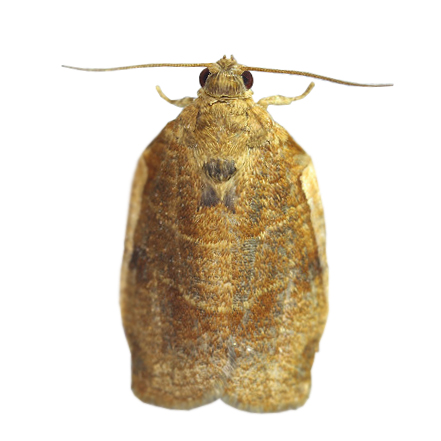


| Latin Name | Choristoneura longicellanus |
| Common Name | Hoshinoa longicellana |
| Biology | Adult moths are active at night and phototactic, mating and laying eggs shortly after emergence, with eggs mostly deposited on the undersides of tea leaves. Upon hatching, larvae first feed gregariously on eggshells before dispersing to inflict damage: early instars skeletonize leaf mesophyll, while later instars roll leaves into shelters to feed inside; when disturbed, they release silk threads to suspend and relocate. This pest produces multiple generations annually, overwintering as pupae in rolled tea leaves or fallen foliage; high-temperature and high-humidity environments favor its development and reproduction. |
| Damage | This pest primarily damages tea plants and secondarily harms forest trees including oak and birch. |
| Distribution Regions | East Asia |
| Monitoring | Pheromone lures mimic natural sex pheromones to attract male insects into specialized traps for population monitoring and suppression. As a core IPM component, monitoring enables early risk detection and targeted control. Mass trapping reduces mating opportunities to curb offspring populations. Protocols: ●Use only with matched traps. ●15-45 traps/hectare,replace/replenish every 4-6 weeks. ●Wear gloves or wash hands with detergent when switching lure types. ●Refer to trap-specific hanging instructions. |
| Recommended Traps | Delta Trap, Wing Trap |

分享您的联系信息,即可获得精准匹配的信息素解决方案。如果我们现有的产品组合缺乏最佳匹配,我们的合成化学团队将启动定制开发——从分子结构设计到规模化生产。